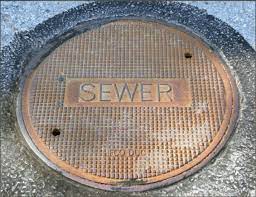By John Branston
“He who controls the sanitary sewer rules the world.” – Developer Cary Whitehead Jr.
***
Cary Whitehead had a way with words, and that was one of the reasons I liked him. He could also tell a good story, and boy did he know some dandies about the rough-and-tumble world of land development in Shelby County and DeSoto County, Mississippi, in the decades of the 1960s and on into the 21st century.
So why bring him up now? Because the mundane business of sewer extensions and annexations has been brought to the attention of the Memphis City Council by Mayor Jim Strickland in an extraordinary mid-week email (a deviation from his regular Friday offerings).
He wrote thus, and I gladly yield the space to him:
Tomorrow, you have the sewer ordinance set for third reading. The ordinance affects the unincorporated parts of Shelby County.
For decades before 2008, Memphis extended sewer service beyond city limits, waited until an areas were developed, and then annexed them. About 10 years ago, the state changed annexation laws and effectively terminated annexations. In addition, the state and the county eliminated the city’s zoning authority for land three miles outside the city limits. If our authority ends at our city limits, our responsibilities should also end at the city limits.
While our administration has addressed you on this issue and I have discussed it with some of you, I wanted to briefly review with you why the City should not extend any sewer service beyond our current service area.
First, there is probably no city in the country that extends sewers beyond their borders. We know that Arlington and Collierville do not, despite the fact that they are closer to the unincorporated areas nearest Blue Oval City, the area opponents claim to want to serve with homes. It appears that the opponents of this ordinance have not even asked these cities for sewer service despite the fact that some of them reside or have their offices in those cities.
Second, we need to prioritize Memphis residents. We have limited capacity in our system. I believe that what capacity we have must be used for Memphis residents and businesses. As Memphis 3.0 has codified, we must “build up, not out.”
Third, in our history, when we focus on sprawl and development outside the city, Memphis loses population. Between 1980 and 2010, 120,000 people moved out of Memphis – an average of 40,000 per decade. Let me explain. (He says Memphis grew by annexation, recapturing residents who fled for the ‘burbs.) From 2010 – 2020, Memphis stopped allowing massive developments in the unincorporated areas to add onto our sewers, and we focused on growth in our city. (Mostly true. The Gray’s Creek sewer extension was the last straw.)
Fourth, our taxes will go up, and debt will increase. Historically, when the city extended sewers and waited for the area to be developed before annexing it, the County had to improve roads and build schools and fire stations. The County raised taxes and incurred new debt – way beyond any new revenue paid by the new homes. And as we know, Memphians are two-thirds of county taxpayers.”
And there you have it. If you are still reading and would like to know more about this dull but important business here is a link to a column I wrote in 2012 – Memphis Flyer | Capture the Children
**
John Branston was a reporter and columnist in Memphis for 40 years
**
Join us at the Smart City Memphis Facebook page and on Instagram for daily articles, reports, and commentaries that are relevant to Memphis.



